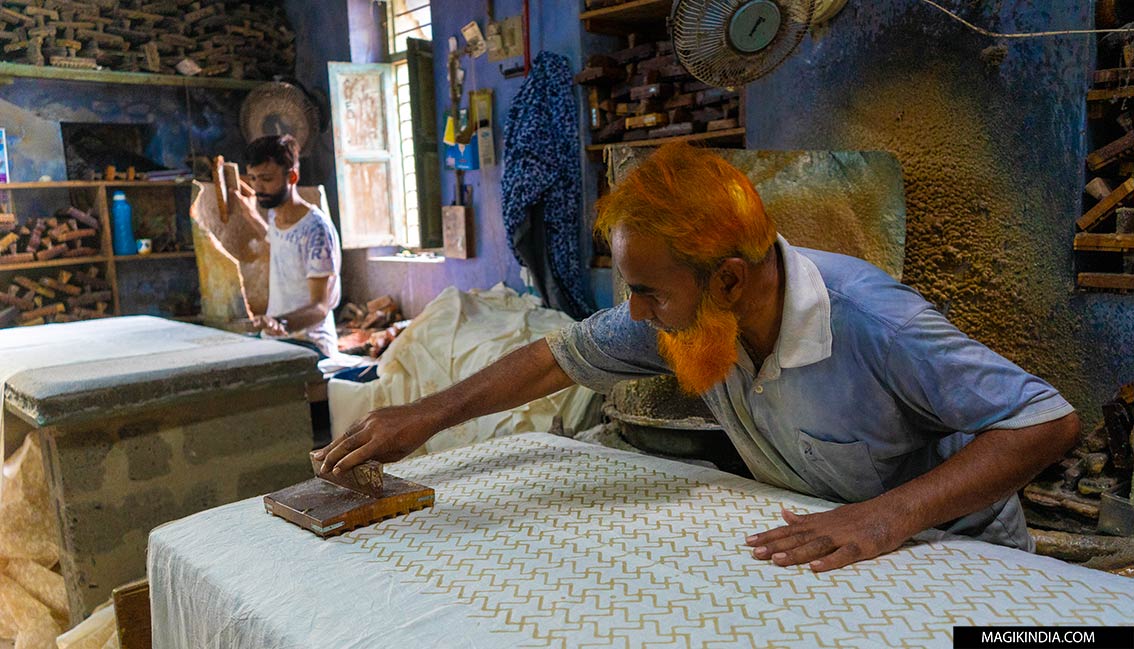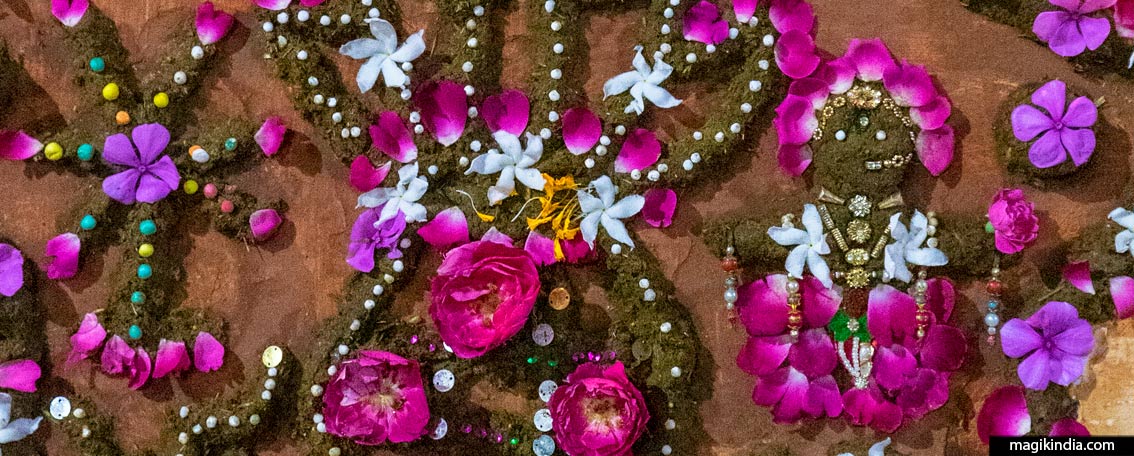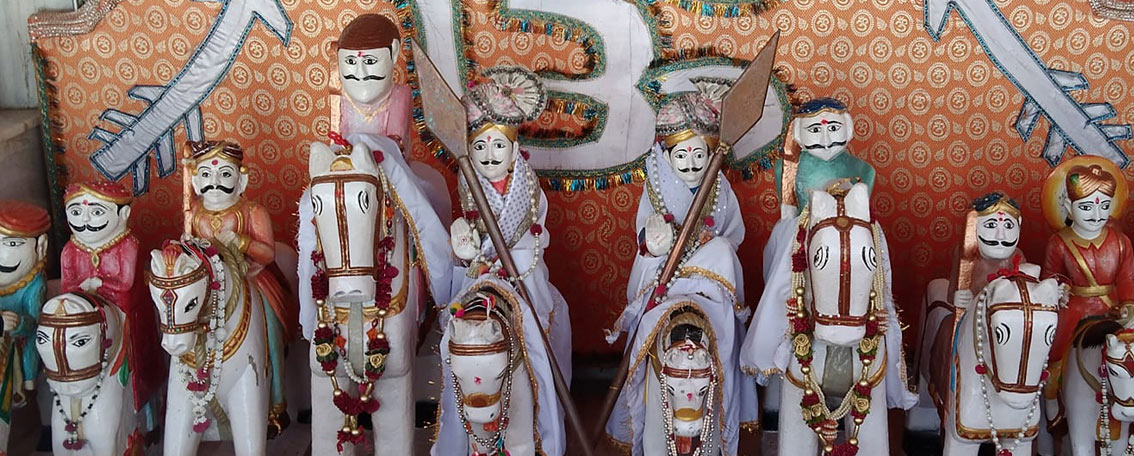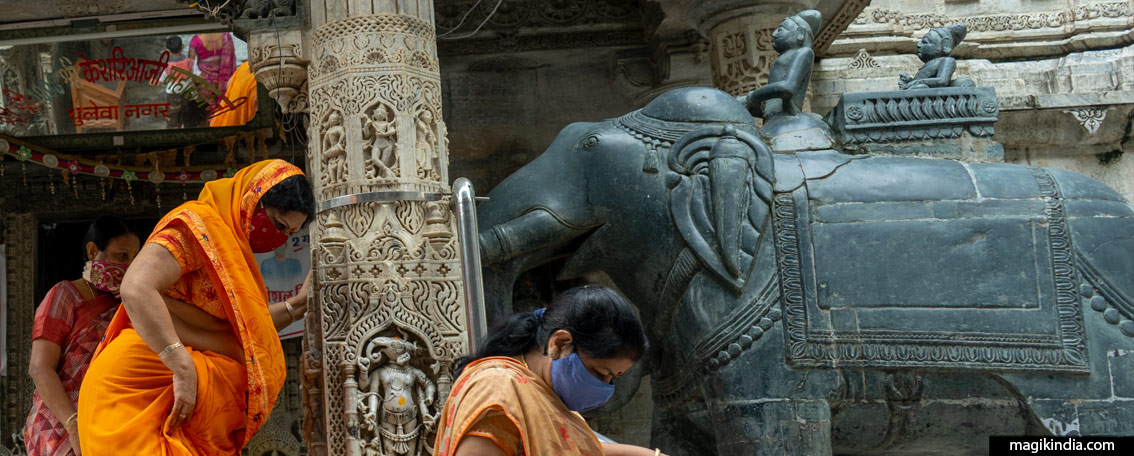
Kesariyaji Rishabhdev, one of the four teerth of Rajasthan
The Jain temple of Rishabhdev also called Kesariyaji or Rishabdeo, located 60 km south of Udaipur, is one of the four great “Teerth” (pilgrimages) of the Mewar region in Rajasthan. The other three being: Shrinathji, Shri Eklingji and Shri Charbhujaji. However, unlike the latter, Rishabhdev is not only revered by Jains, but also by Hindus and Bhils, the majority indigenous people of the region. This particularity, which was once the subject of discord between the different communities, contributes to the very special atmosphere of this place.
Rishabdeo Temple
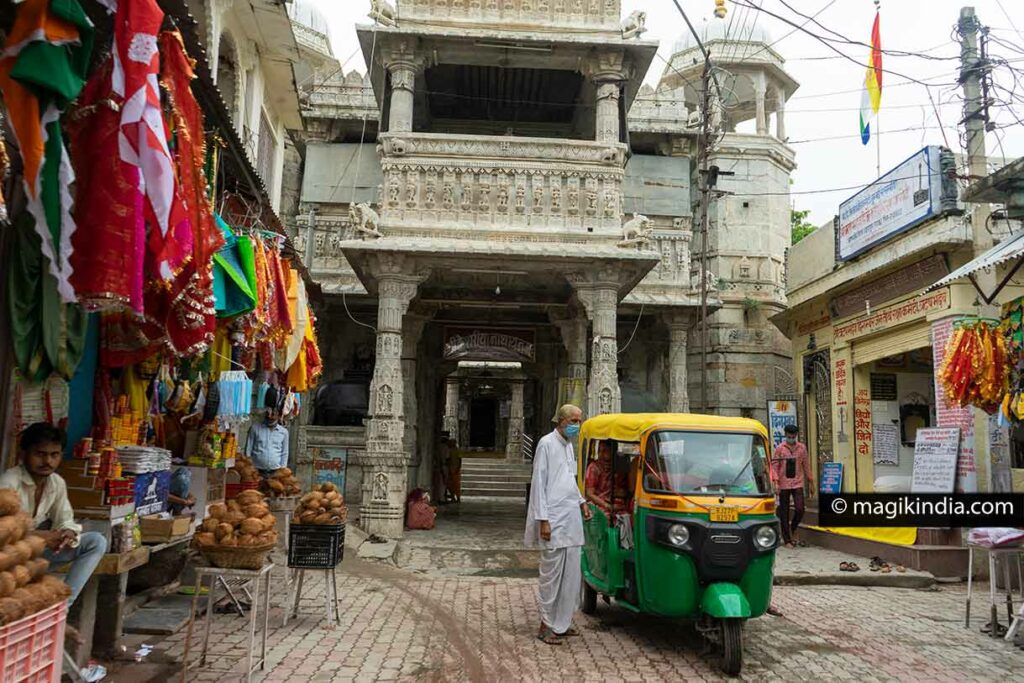
Rishabhdev Temple stands in a small town of the same name lying on the banks of the Kunwarika River. It is reached through narrow streets dotted with old houses crumbling under the weight of time.
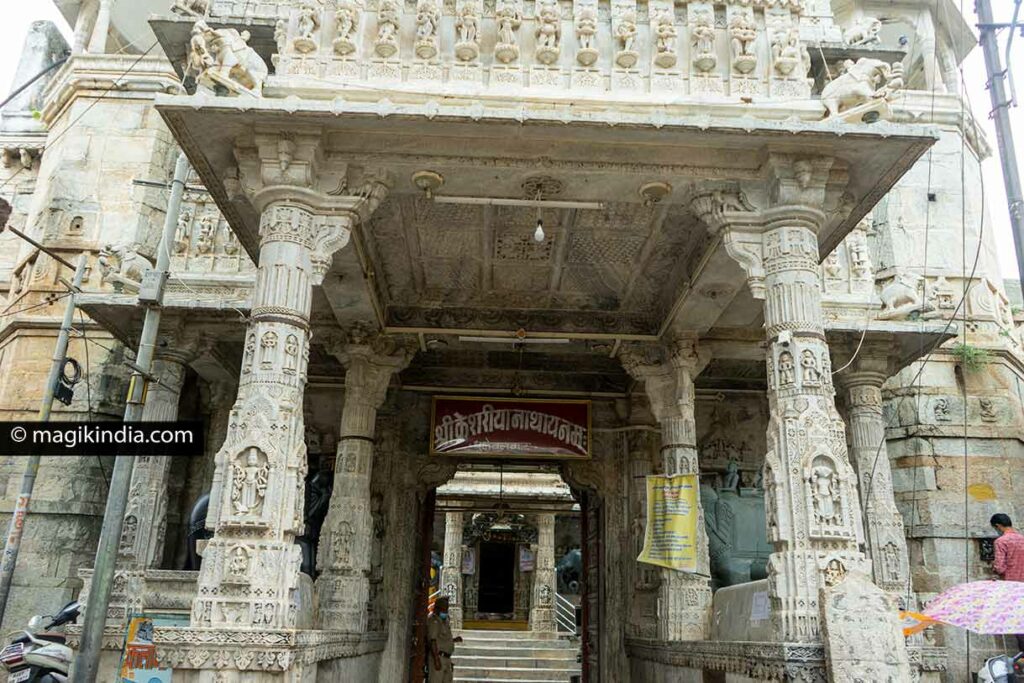
Rishabdeo sits at the end of a cobblestone driveway, surrounded by souvenir stalls and offerings. A first massive door opens onto a court that includes several buildings. The entrance to the main sanctuary is guarded by two elephants carved from pareva, a local green-grey marble.
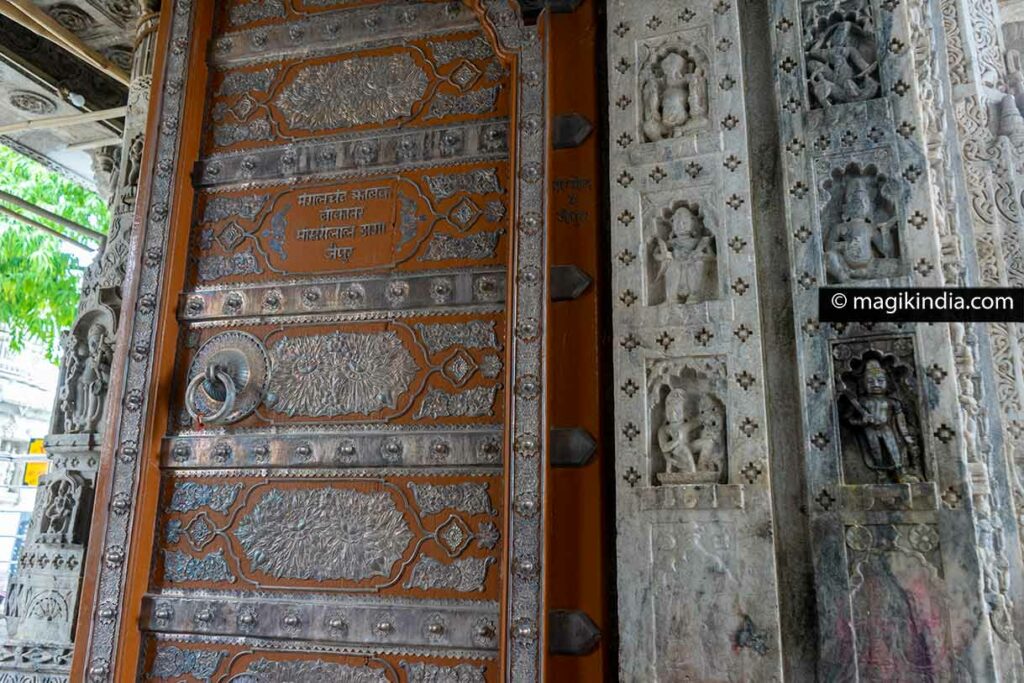
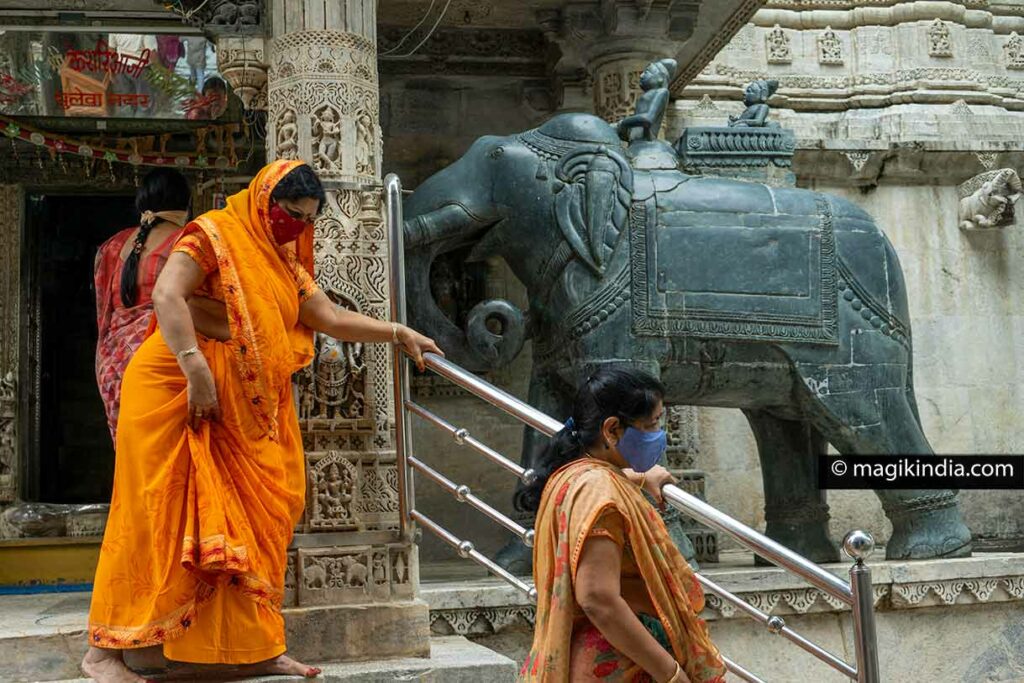
From there, photos are prohibited and it’s a pity as the structure which includes fifty-two Jinalayas (spikes) and more than 1000 carved pillars is of great finesse and displays a profusion of carvings.
In the center stands the black schist statue of Rishabhdev (also known as Adinath) the first of the twenty-four Tirthankars (enlightened teachers) of the Jain faith.
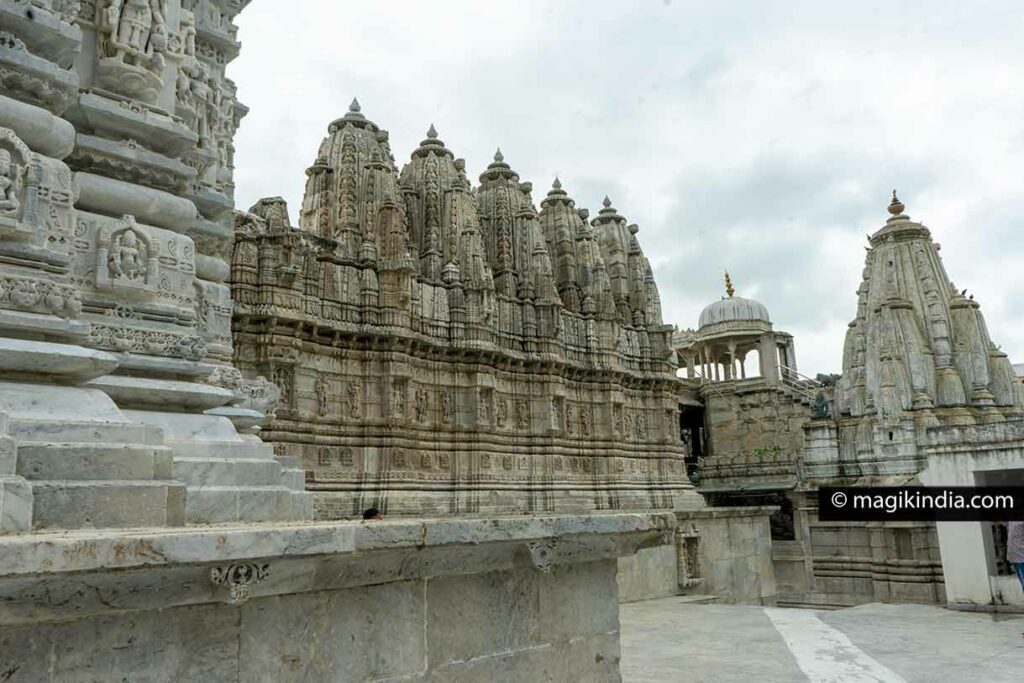
Rishabhdev was born to Nabhi and Marudevi, the king and queen of Ayodhya, on the ninth day of the month of Chaitra Krishna Navami (March-April). The city of Ayodhya is therefore not only sacred for Hindus (birthplace of Lord Rama), but also for Jains.

Rishabhdev is usually depicted in the lotus posture or in “kayotsarga”, standing in a contemplative state. The distinguishing features of the Tirthankar are his long locks of hair that fall over his shoulders and an image of a bull accompanying him.
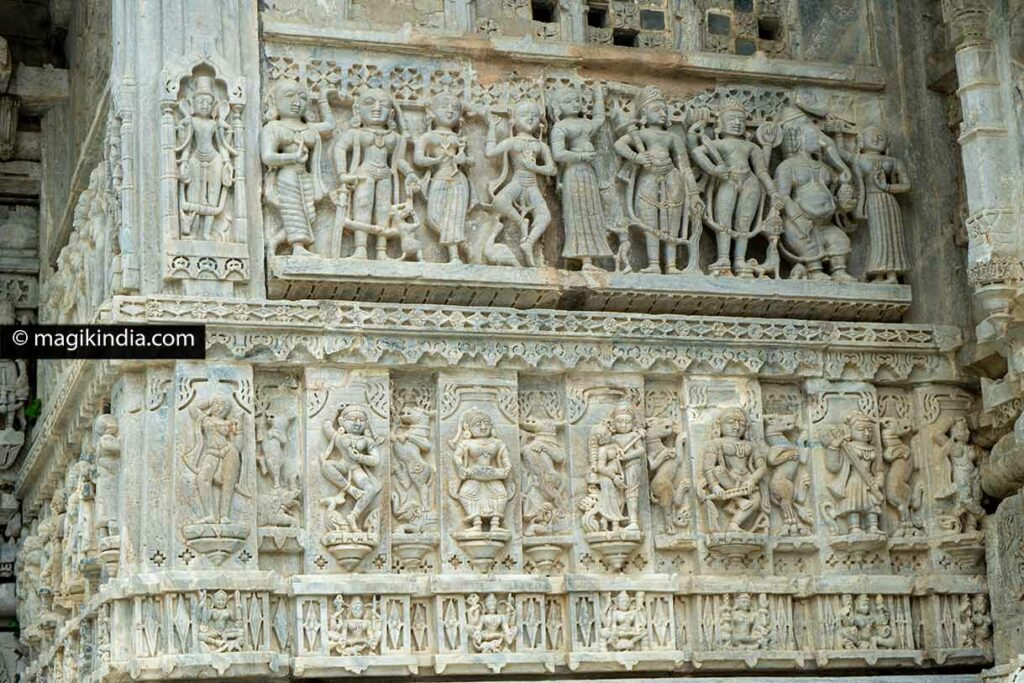
“Kesariya ji” is another name given to this statue. Indeed, offerings of “kesar” (saffron in Hindi) are made every day on the statue. During particular festivals, a paste made from saffron is slapped on the saint.
Symbolically, saffron represents fire, and as impurities are burned away by fire, this color symbolizes purity. It also represents religious abstinence. In Hinduism, it is notably the color of sadhus who have renounced the material world.
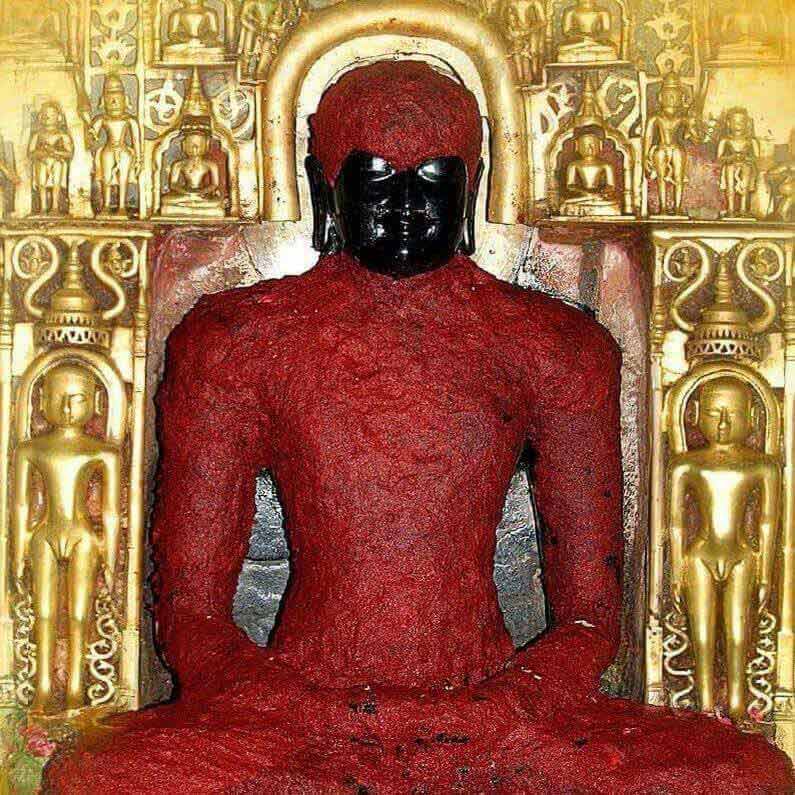
Although the temple dates back to the 8th century, Kesariya ji is said to have been revered since antiquity, not only by the Digambars and the Shwetambars, the two great branches of the Jain faith, but also by the Hindus and by the surrounding Bhil tribes. And, there are several reasons for this stated in the following paragraphs.
Is Rishabhdev an avatar of Vishnu and Shiva?
In the Bhagavata Purana, one of the sacred texts of Hinduism, Rishabha is considered one of the twenty-four avatars of the god Vishnu. Some scholars claim that this avatar is the first Tirthankar of Jainism.
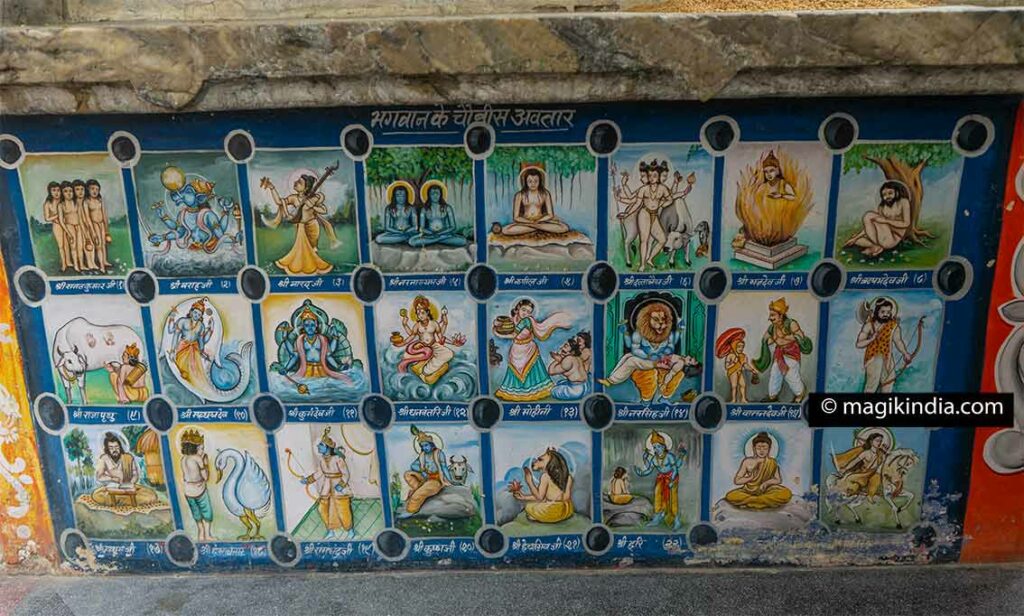
Additionally, in some Shaivism texts like the Linga Purana, Rishabhdev is seen as a form of Lord Shiva. “Rishabha”, in Vedic literature, means “bull” and is an epithet for Rudra (another name for Shiva).
It is true that there are many similarities between Rishabhdev and Shiva.
Rishabhdev is a Digambar ascetic, that is, he wears no clothes. Shiva is also an ascetic, wearing a simple loincloth. Both are depicted in a yogic posture with half-closed eyes and long hair. Even more surprisingly, the bull is the symbol of Rishabhdev and Shiva’s mount is also a bull named Nandi. Finally, the Tirthankar attained Moksha (salvation) at Mount Kailash which is the very abode of Lord Shiva.
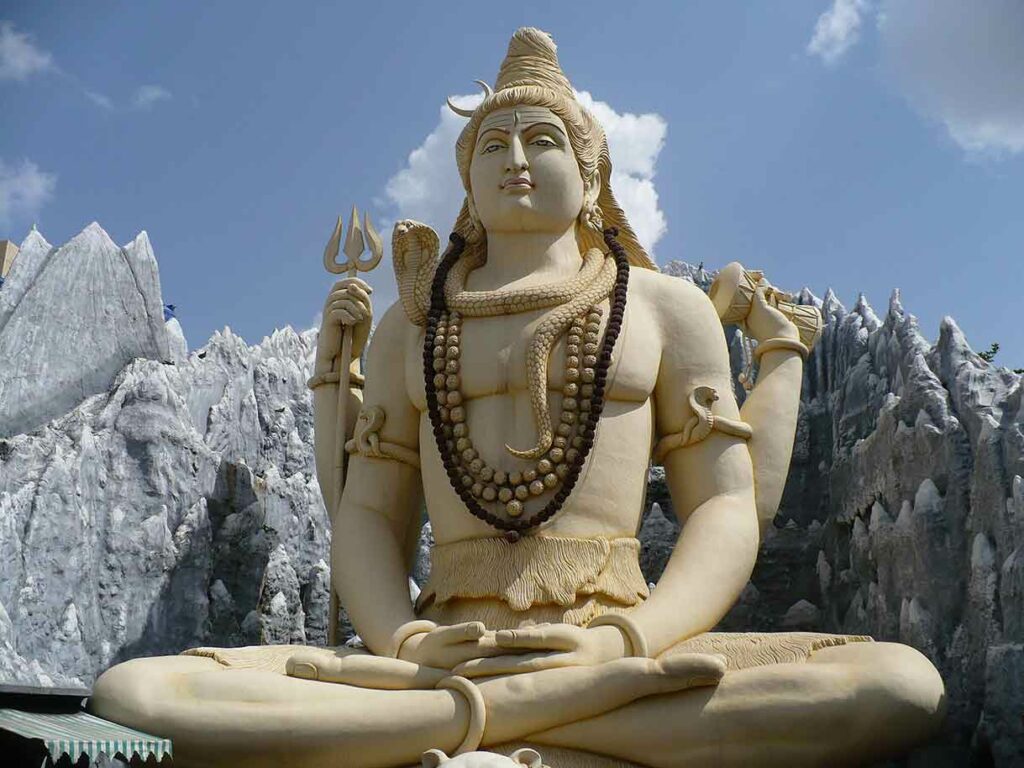
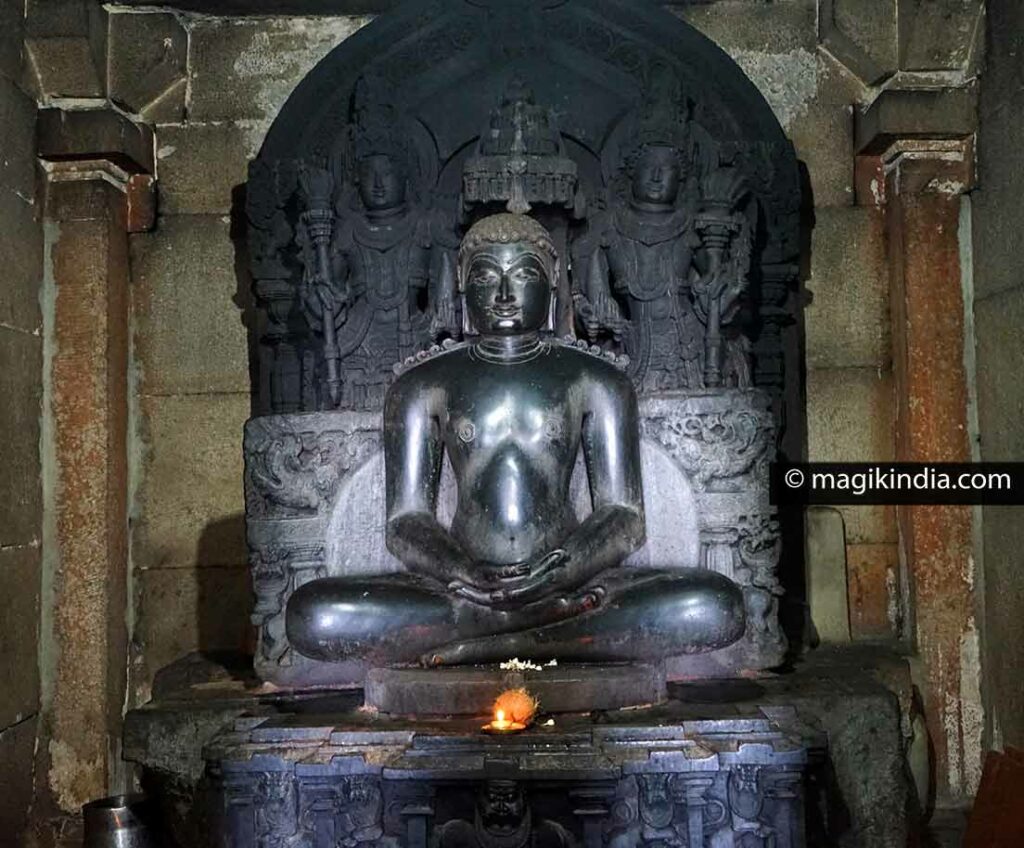
Because of these Hindu avatars of Rishabhdev, there are in the complex, in addition to the main Jain shrine, two Hindu temples, Sri Charbhuja ji dedicated to Krishna (avatar of Vishnu) and Shri Ekling Ji Somnath, representing Shiva in the form of a lingam.
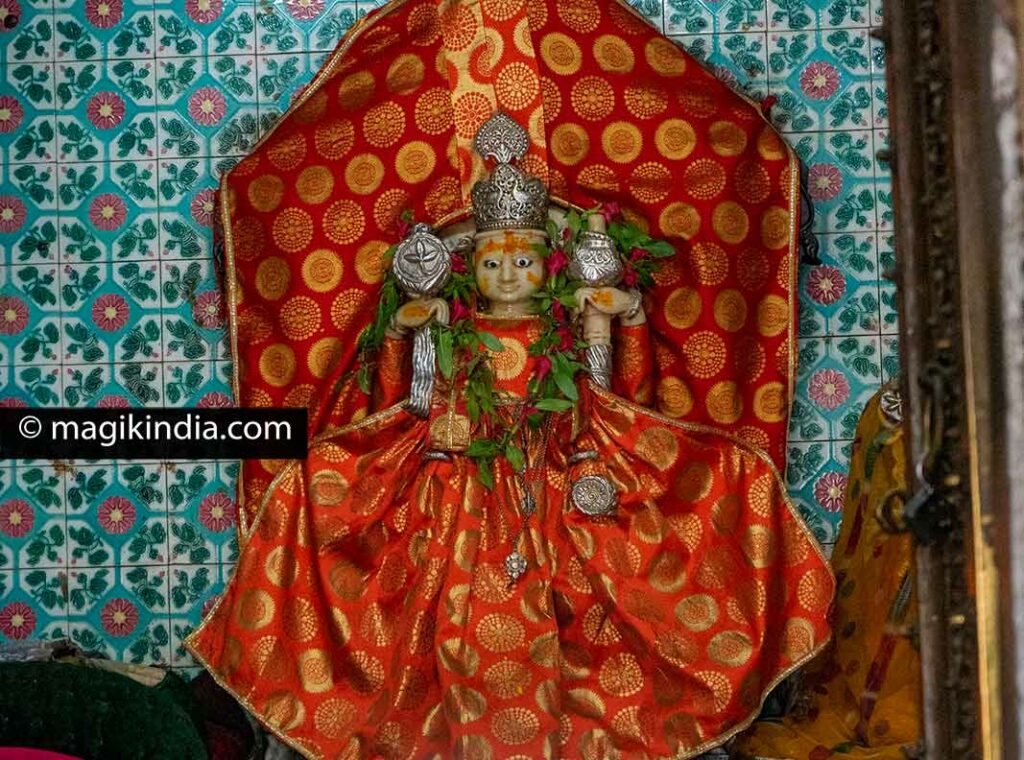
Rishabhdeo, the “Kala ji” of the Bhils
The Rishabhdev statue is also revered by the Bhils, the indigenous people of the Mewar-Vagad region (Udaipur, Dungarpur and Banswara), who call him “Kala ji”, the black god.
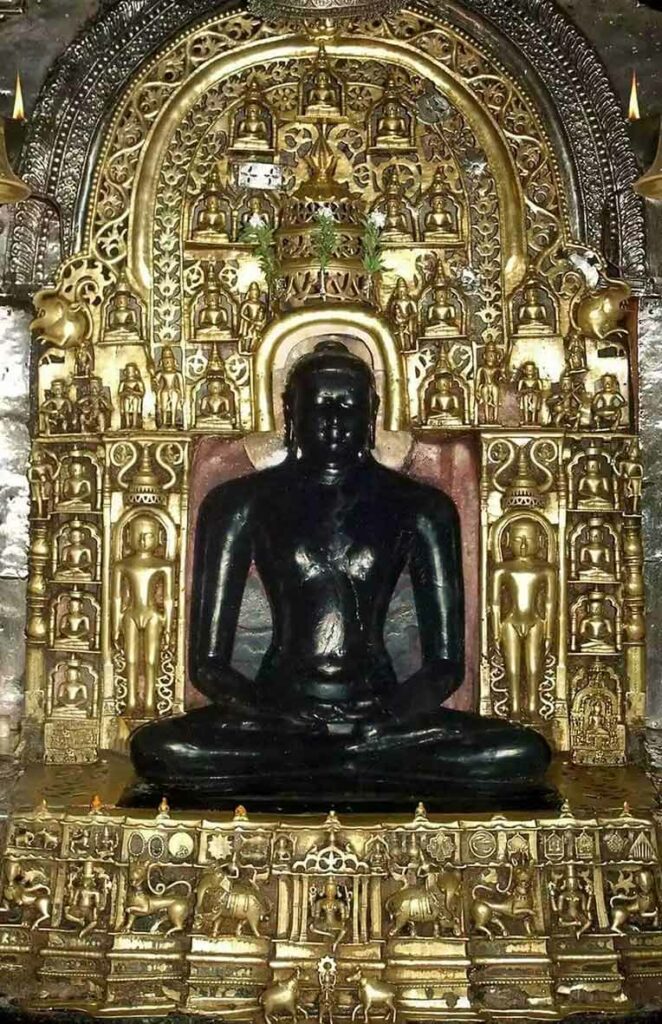
This worship is probably due to a popular Bhil legend which says that a villager named Dhulia saw in a dream the idol of the black lord, where the temple now stands, buried under a mound of earth with Kamadhenu, the mother of the sacred cows, poured her milk as an offering.
While it is very common for Bhils to worship the classical deities of the Hindu pantheon in addition to their local deities like Kanalyo Mata, Bhed Mata, etc., the worship of a Jain image is much rarer and it is what makes this sanctuary unique.

